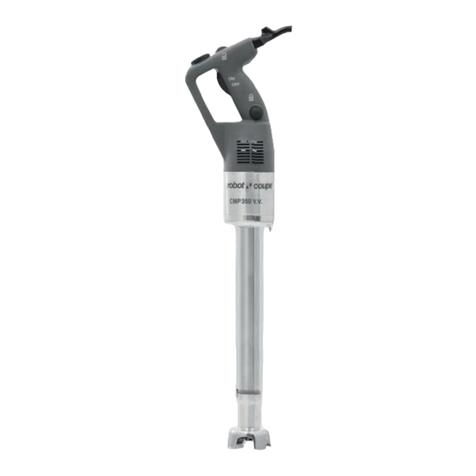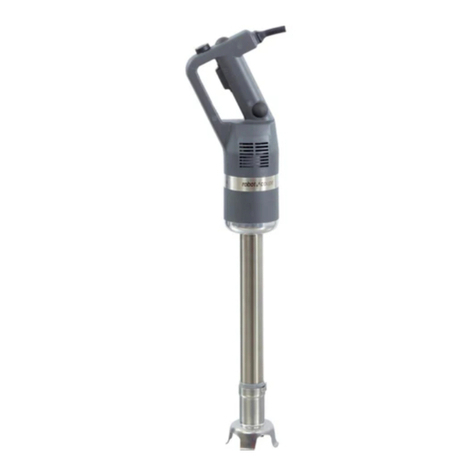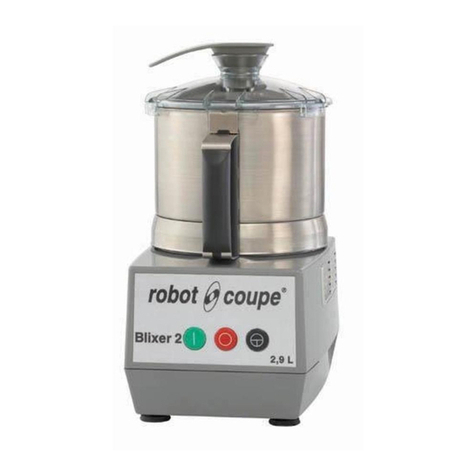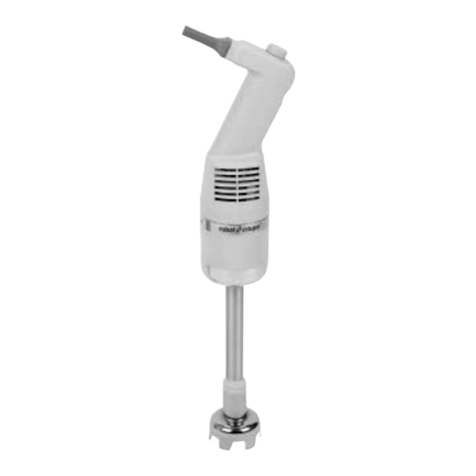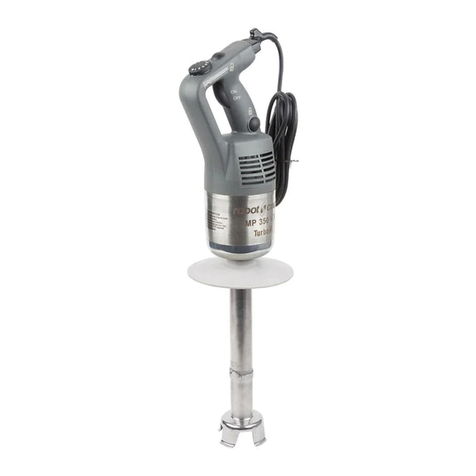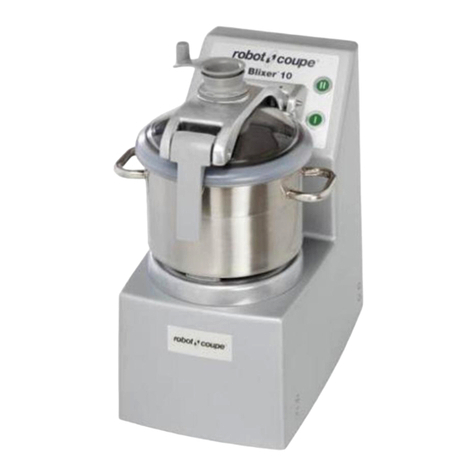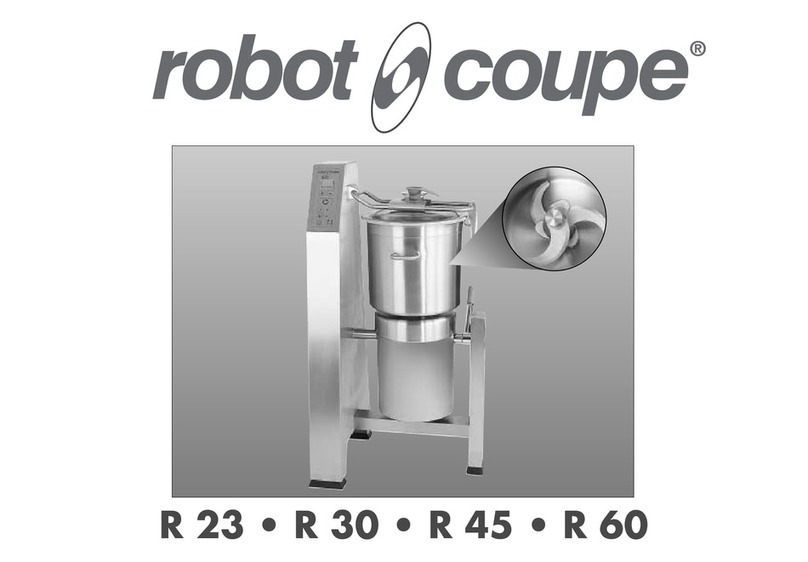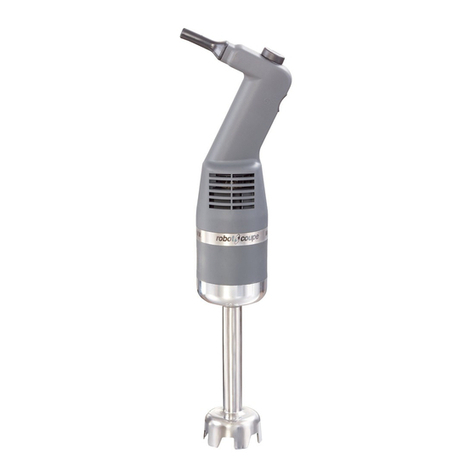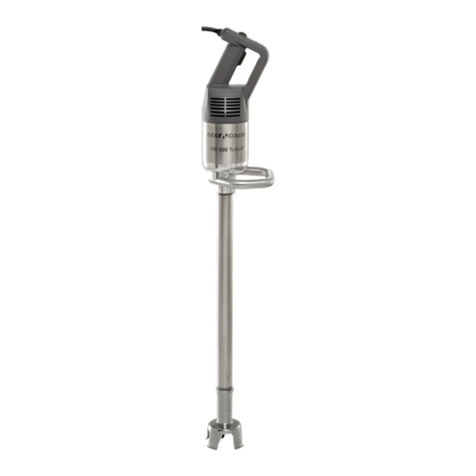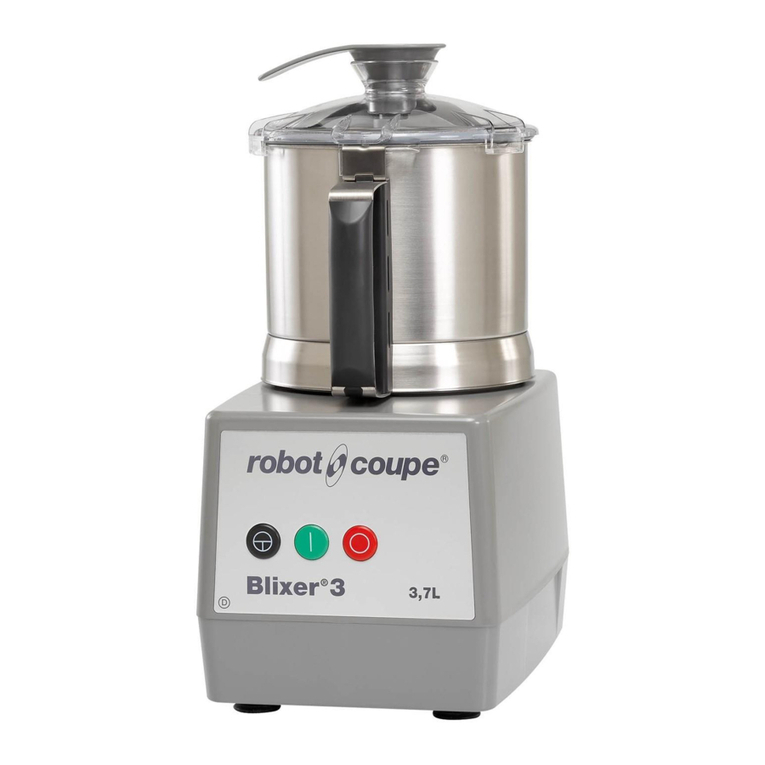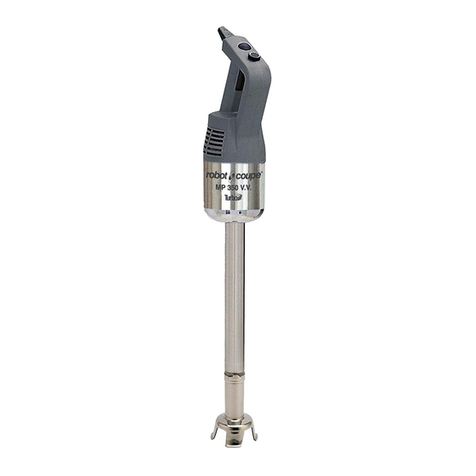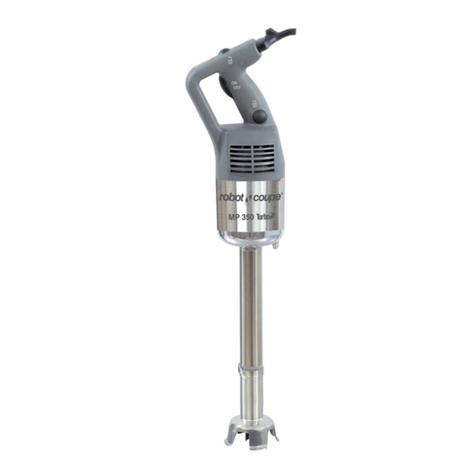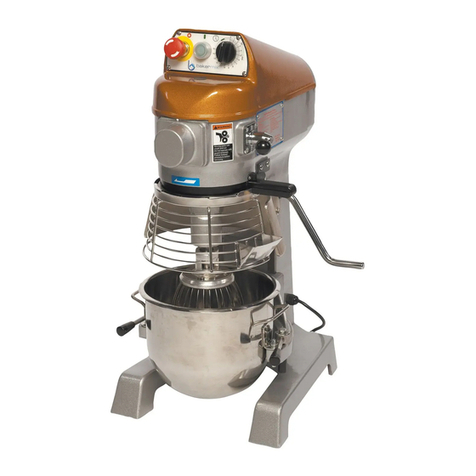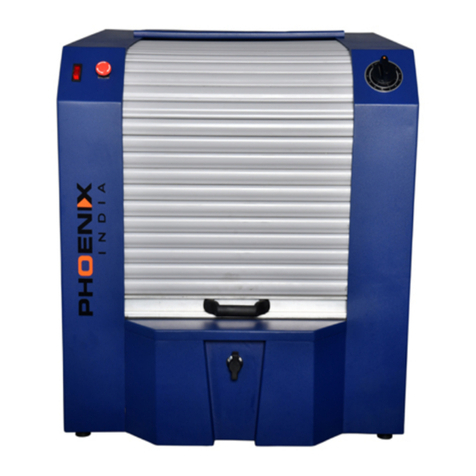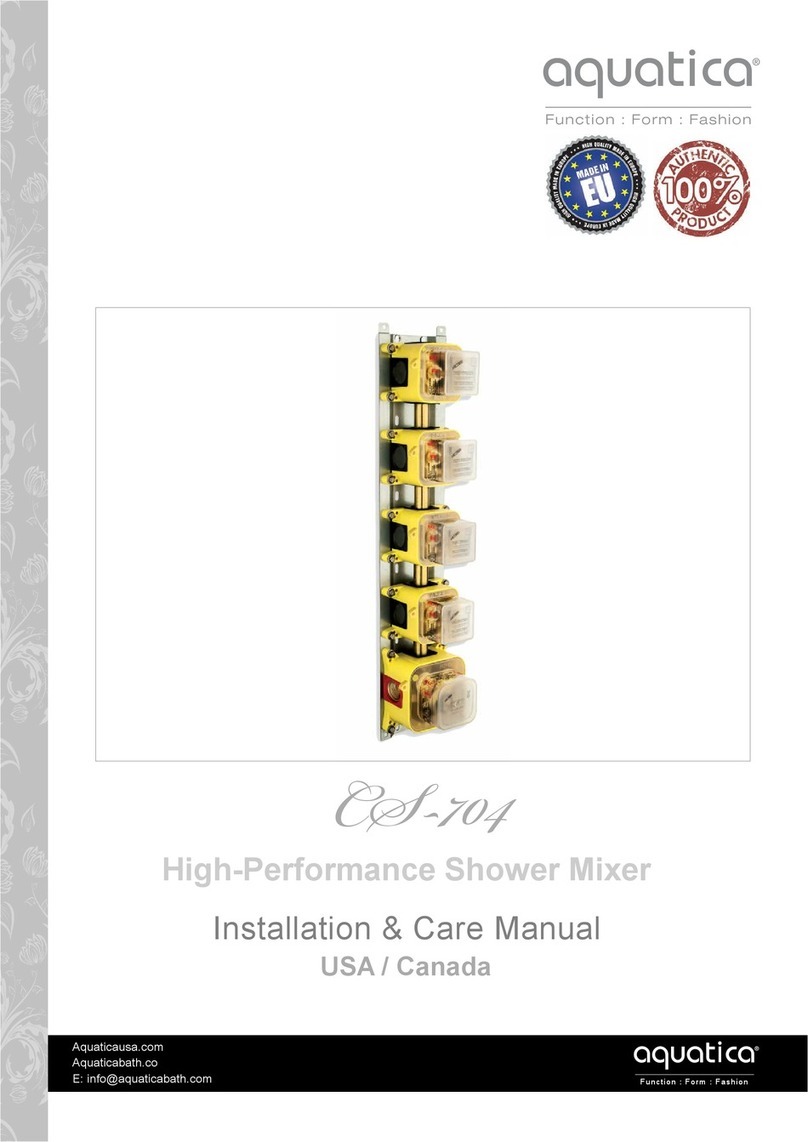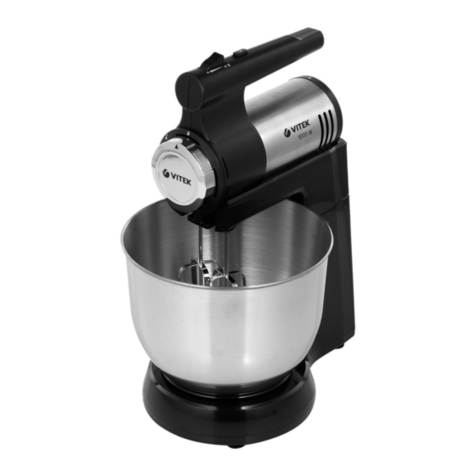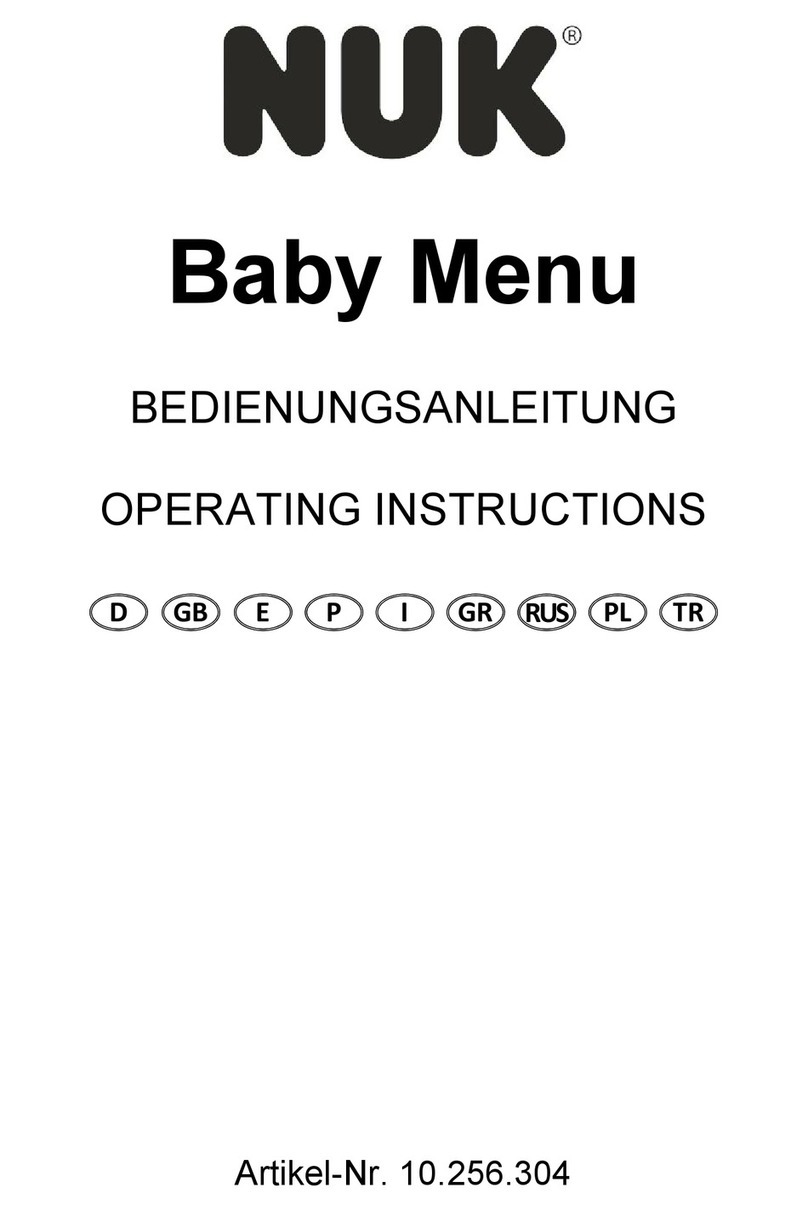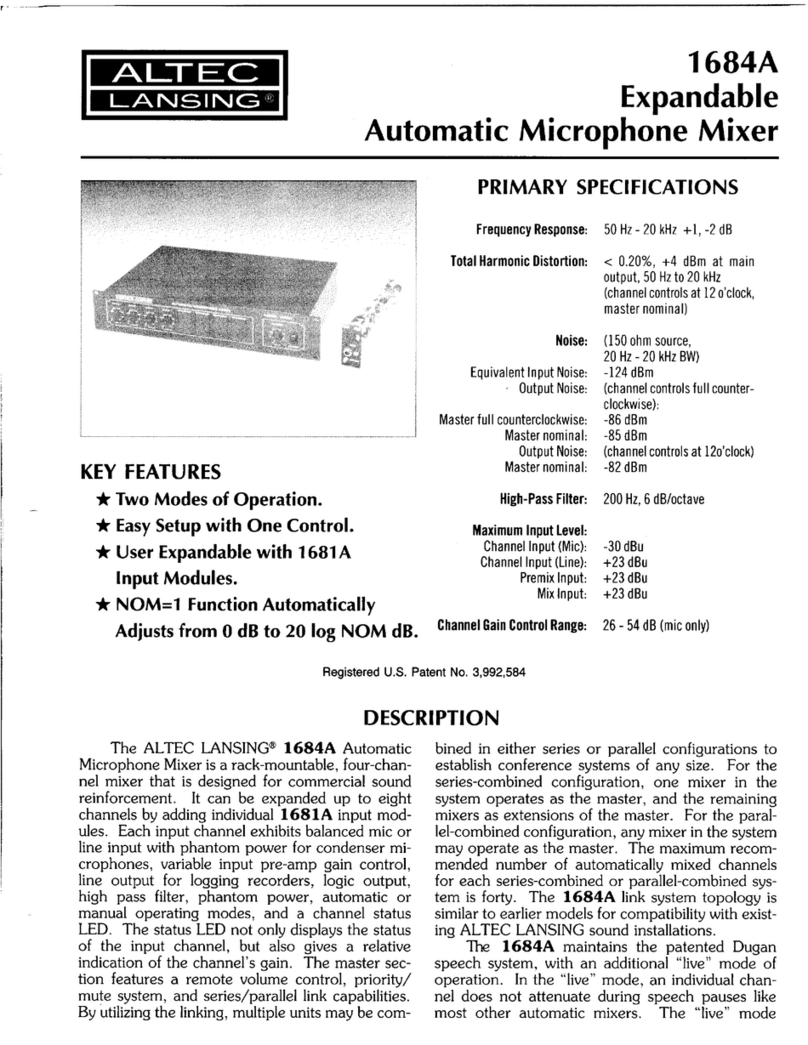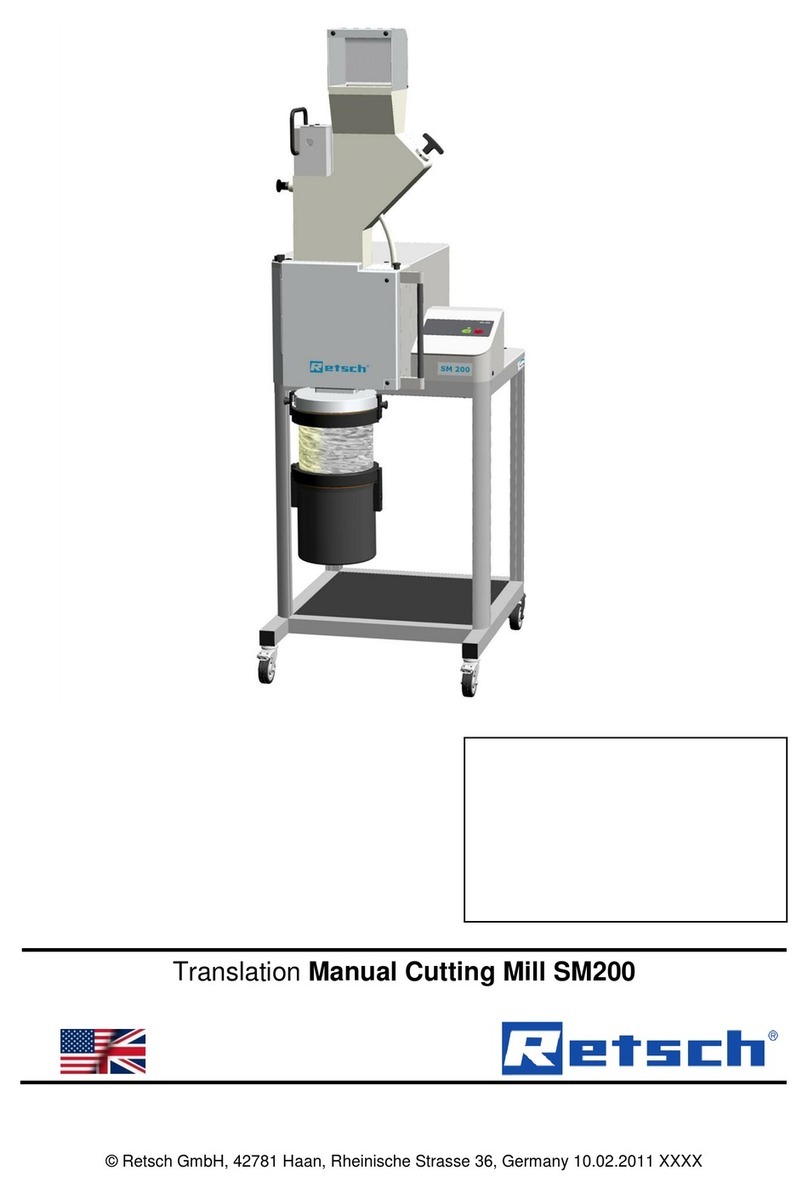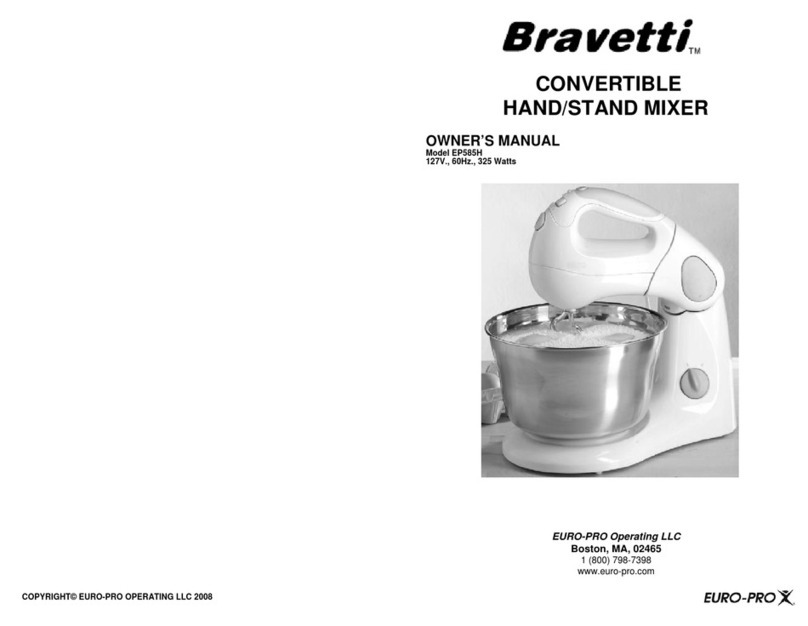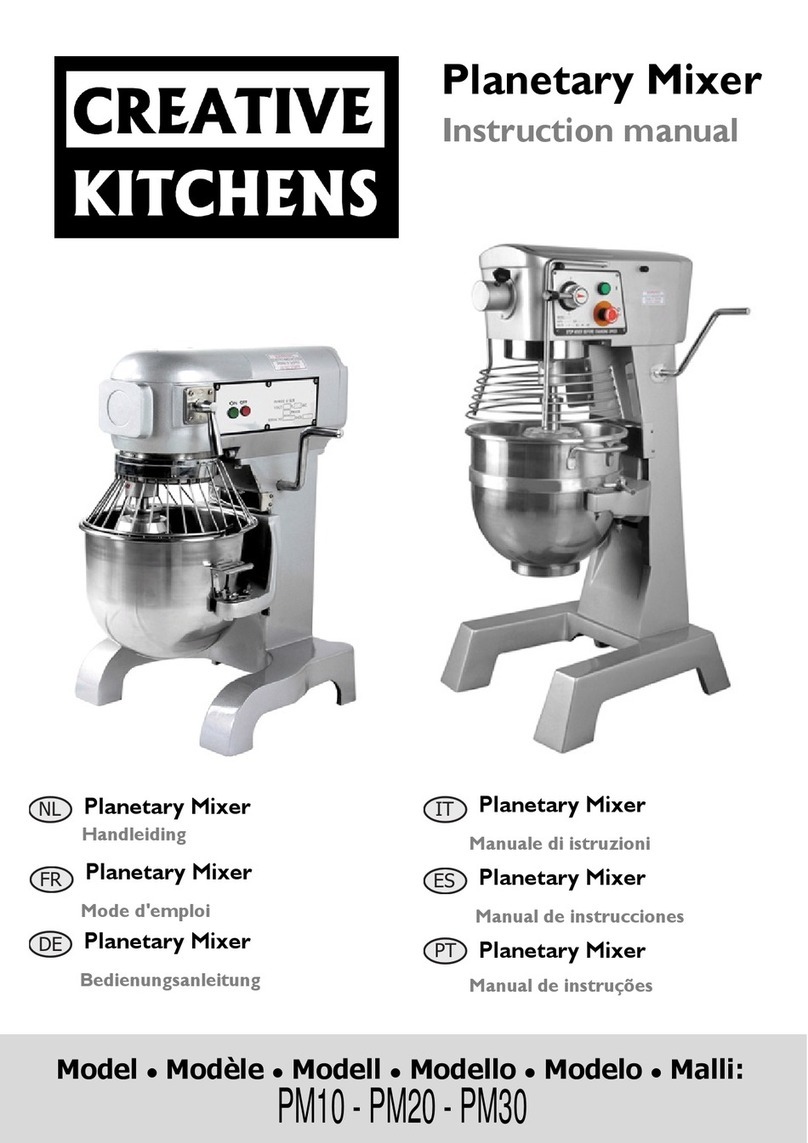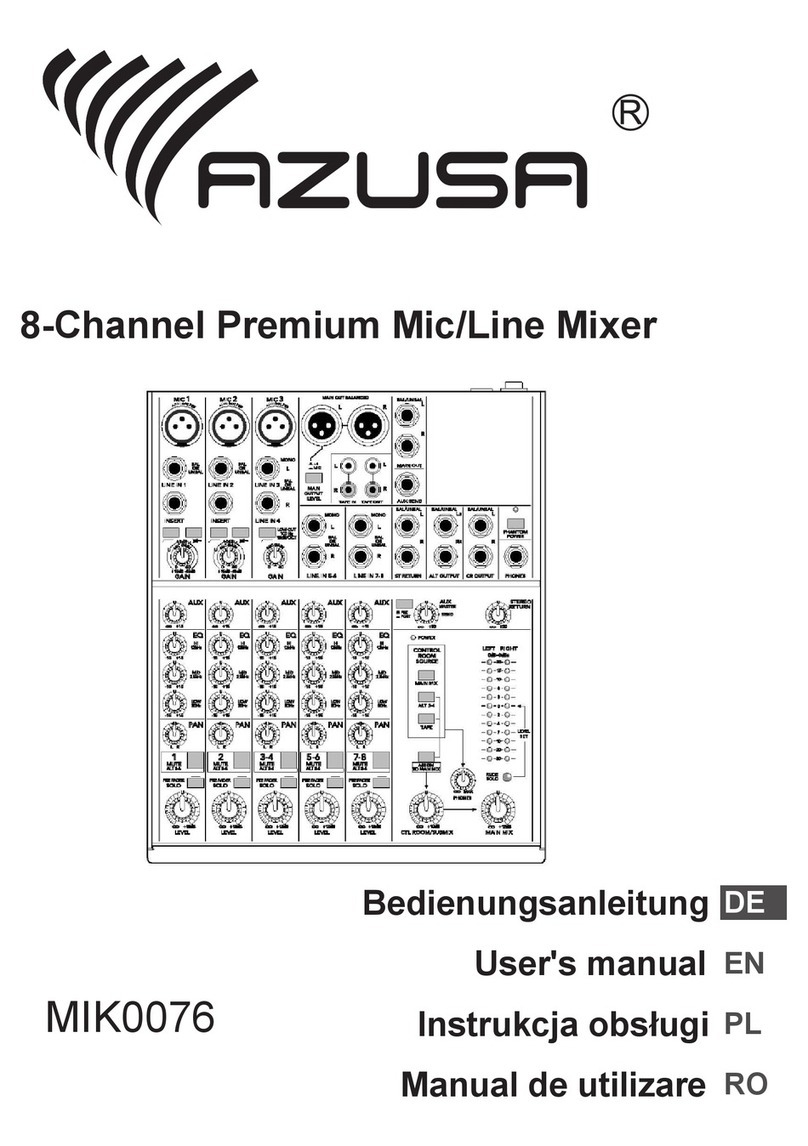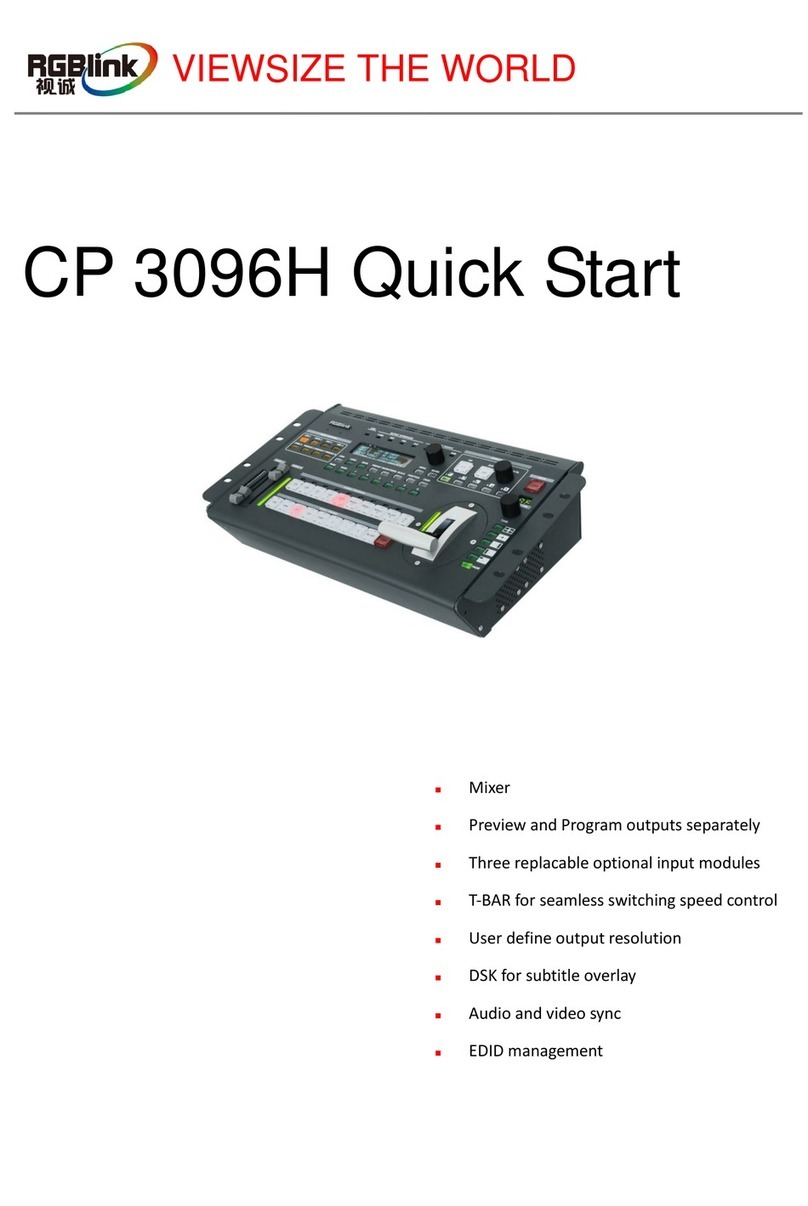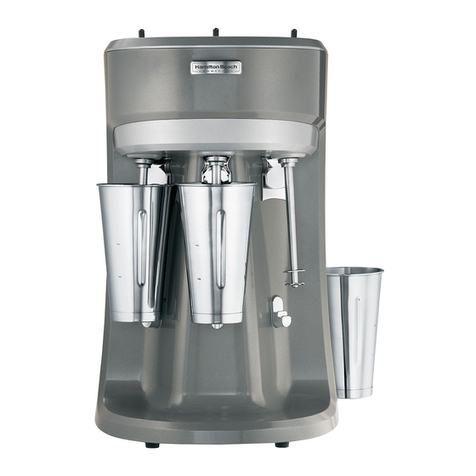
The cutter-mixer has numerous other applications;
the above examples are given for guidance and
may vary according to the quality of ingredients or
recipes.
• SUMMARY:
Dual-speed cutter
- 1 speed/ 3 speeds / 4 speeds: 1,500 or 1,800
rpm.
- 2 speeds: preparation at 1,500 or 1,800 rpm,
nishing touches at 3,000 or 3,600 rpm.
Variable-speed cutter:
- 1 speed: 1,200 to 1,500 rpm.
- 2speeds: nishing touches at 3,000 rpm.
- 3speeds: 1,500 to 2,000 rpm.
- 4 speeds: 600 to 1,500 rpm.
NB: Use the lowest available speed for mixing
ingredients
The serrated blades are mainly used :
- for making pastry
- for grinding.
The fine serrated blades are mainly used for:
- chopping parsley
- blending
• VACUUM KIT R-VAC®
Your cutter can perform vacuum processing without
any need for modifications.
Simply assemble the vacuum kit R-VAC®, patented
by ROBOT-COUPE on to the lid and connect it to a
vacuum pump (see instructions page 11).
If you already have a vacuum packing machine,
you can connect the kit to the vacuum pump on this
machine.
The R-VAC®kit was specifically designed so
that liquids can be added to the mixture during
proces-sing, whilst keeping the food under
vacuum.
CLEANING
When the machine has completed its task, open the
lid by releasing the locking handle.
Press firmly down on the handles and turn the bowl
in an anticlockwise direction to free it, then lift it up.
If the food has a solid consistency, remove the knife
and empty the bowl.
USES
Max processing
quantity (kg)
Processing
time (mn)
Speed
(rpm)
see
summary
R 8 R10 R15 R20 R8 / R10
R15 / R20
• FRUIT
Compotes / fruit purée 4 5 9 11 4 1500/2000
EMULSIFY
Mayonnaise / ailloli 4 5 9 11 3 4 speeds
Rémoulade sauce 4 5 9 11 5 600/1500
Snail / salmon butter 2 3 5 7 4 600/1500
KNEAD
Shortcrust pastry / shortbread 4 5 7 9 4 4 speeds
Flaky pastry 4 5 7 9 4 900/1500
Brioche + Raisin dough 4 5 7 9 4 900/1500
+ 300
GRIND
Almond paste / nuts 2 3 5 6 6 900/1500
Seafood / ice cubes 2 3 6 8 5 900/1500
Breadcrumbs 2 3 5 6 4 900/1500
OPTIONS
• STAINLESS-STEEL MINI BOWL
Optional extra: 3.5-litre mini bowl for the R 8 and
4-litre mini bowl for the R 10 and R 15, boasting at
least 2 speeds 1,500 and 3,000 rpm (patented system
exclusive to Robot-Coupe) plus 100% stainless steel
blade assembly, easily taken apart, for making quick
sauces, chopping herbs and carrying out all those
other last-minute tasks.
• STAINLESS-STEEL MINI BOWL WITH 3.5-LITRE
CAPACITY FOR R 8 AND 4-LITRE CAPACITY
FOR R 10 • R 15
1) Place the mini bowl
over the chimney of the
large bowl, then turn it
until it fits into position
over the lug. The mini
bowl handles should now
be lined up with those of
the large bowl.
2) Next, slot the 100%
stainless-steel blade as-
sembly over the motor
shaft and place the mini
lid on top of the mini bowl
to avoid splashing. Next,
close the machine lid.
• SERRATED KNIFE - FINE SERRATED KNIFE
The blade holder can be fitted either with two coarse
serrated blades or with two fine serrated ones.
WARNING
As a precaution, always unplug your appliance
before cleaning it (hazard of electrocution) and
handle the blades with care (hazard of injury).





















